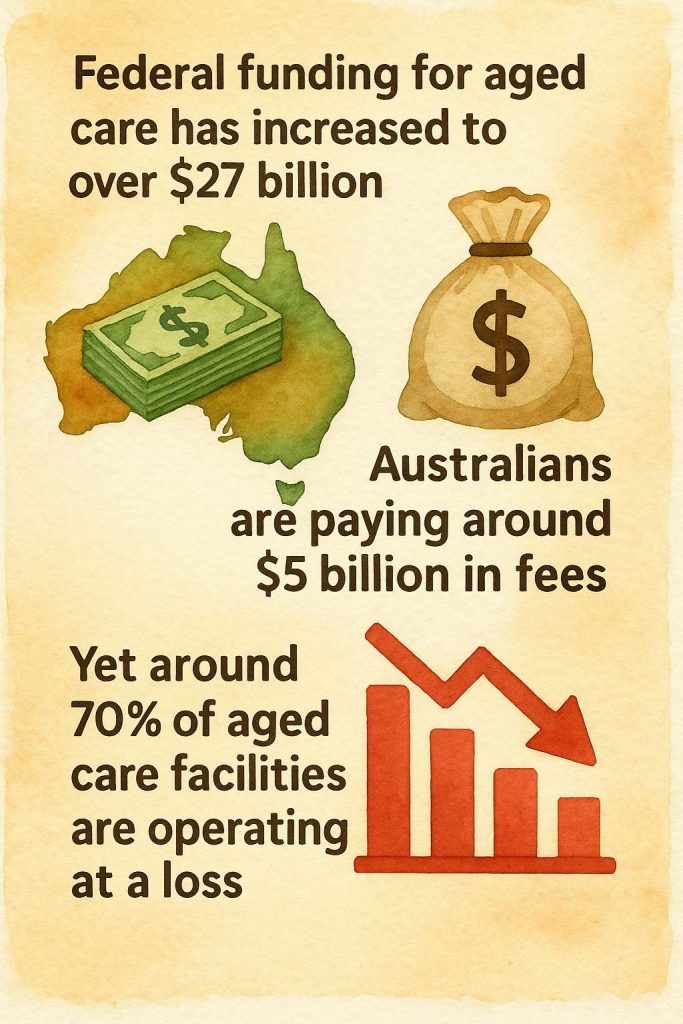Nearly four years have passed since the Royal Commission into Aged Care Quality and Safety exposed systemic neglect, underfunding, and regulatory failure across Australia’s residential aged care sector. The Commission’s final report urged sweeping reforms, including the introduction of a Medicare-style levy to ensure sustainable long-term funding.
Since then, federal funding has increased substantially, with the Albanese government allocating over $27 billion annually to aged care. Australians are also contributing an estimated $5 billion per year through means-tested fees. Despite this, industry data indicates that approximately 70% of aged care facilities continue to operate at a financial loss—highlighting a significant gap between funding levels and service delivery requirements. This is in stark contrast to the rising profits reported by publicly listed aged care providers and increasing market consolidation.
In 2024, the federal government convened an expert task force comprising aged care executives, economists, policy advisors, and sector advocates to examine viable funding models. In late 2024, the task force released its final report, firmly rejecting the Royal Commission’s recommended levy on political and economic grounds. Instead, it proposed a revised user-pays model targeting asset-rich older Australians—primarily baby boomers with substantial superannuation balances and property holdings.

Under the proposal, individuals with high-value assets would pay increased contributions towards accommodation and daily living costs. One key reform includes allowing providers to retain 3% of Refundable Accommodation Deposits (RADs) annually for up to five years, potentially resulting in additional costs of $70,000 on a $500,000 RAD—or up to $140,000 in high-value metropolitan areas where RADs may reach $1 million.
The recommendations also expand provider discretion to charge for “everyday living expenses” and “extra services”—charges already in use among many for-profit operators. If implemented, these changes would represent the most significant overhaul of aged care funding since the 1997 Howard-era reforms, which introduced accommodation bonds and removed the requirement for continuous registered nurse coverage.
These recommendations come at a critical juncture, as the long-awaited new Aged Care Act is expected to pass Parliament by 1 July 2025. Advocates and legal experts have raised concerns that the draft legislation fails to adequately protect resident rights and may skew too heavily in favour of providers. There is growing pressure on the government to ensure that financial reforms are matched by enforceable care standards, transparent accountability, and regulatory oversight.
While aged care providers have broadly supported the task force’s direction, consumer advocacy groups warn that cost-shifting to older Australians and their families risks undermining equity and access to quality care. The government’s decision in the coming months will determine whether aged care in Australia moves toward long-term sustainability—or deepens its reliance on private wealth at the expense of universal accessibility.s on these contentious reforms, which could significantly impact the finances of many elderly Australians, the need for transparent and effective improvements to aged care remains a pressing issue.
